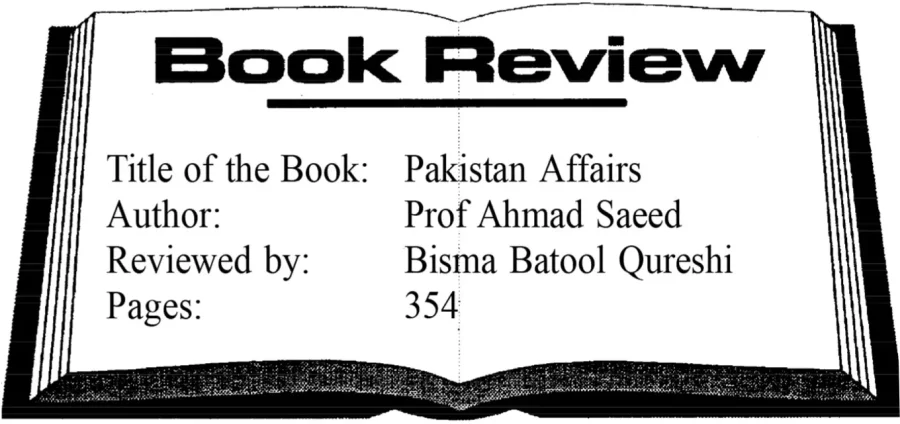TREK to Pakistan” is a book penned by Ahmed Saeed in collaboration with K.H Mansoor, published in 2019. Ahmed Saeed, a scholar who earned his master’s degree in political science and history, held significant academic positions, including Chairmanship at the Department of History in Muhammadan Anglo Oriental College, Lahore, and Islamia College, Lahore. Notably, Saeed represented Pakistan in the International Congress on Quaid-e-Azam in 1976 and authored numerous works, predominantly in Urdu such as “Hasool-E-Pakistan,””Quaid-E-Azam Aur Muslim Press,” and “Iqbal Aur Quaid-E-Azam.” Among his English publications are “writings of Quaid-E-Azam” and “Reflection on Pakistan- Economic Aspect.” His writings primarily revolve around themes like the Pakistan Movement, the Struggle for Pakistan, and the persona of M. Ali Jinnah.
In “Trek to Pakistan,” Saeed presents a comprehensive overview of the Pakistan movement and the prevailing conditions from the War of Independence in 1857 to the creation of Pakistan 1947. He emphasizes the notion of Pakistan Ideology, asserting that Pakistan’s creation stems from the collective struggle and sacrifices of the Muslims of the subcontinent, rather than mere imperialistic influences or a tug of war between imperialists and Neo-imperialists.. Furthermore, “Trek to Pakistan” diverges from conventional historical narratives, adopting a more thematic approach centered on the ideological foundations of Pakistan. The term “TREK” symbolizes the journey from the emergence of Muslim nationalism, through the advocacy of the two-nation theory, the struggle for independence, and the socio-economic and political dynamics culminating in the birth of Pakistan. Saeed commences his narrative from the War of Independence in 1857, elucidating the economic, social, and political underpinnings of the conflict. He highlights the pivotal role of Sir Syed Ahmed Khan in fostering Muslim nationalism and delineates the subsequent political landscape, including events such as the partition of Bengal and the introduction of British reforms.
The book meticulously examines significant episodes like the Shimla Deputation, the formation of the All-India Muslim League, and the Khilafat Movement, underscoring their impact on Muslim unity. The other part of the book enfolds the years of constitutional struggle and counter-constitutional formulas presented by All India Muslim League and Indian National Congress in 1927 until 1935. Delhi-Muslim proposals, Simon Commission, Nehru Report, Jinnah’s 14 points, round table conference and other such events shaped a new constitutional formula in the name of Government of India Act 1935. This constitution initiated elections in sub-continent held in 1936-1937. Writer displays a cruel picture of congress ministries established after the elections and two miserable years for the Muslims. The start of World War 2 1939-1945 appears as the end of ministries, congress resign and arrival of Crips Mission in 1942. The books also highlights the effects of World War 2, where Japan and Germany destabilized British power and British Raj was pressurized. Saeed also delves into the repercussions of World War I and II, elucidating their implications on British power dynamics and the Indian subcontinent. A pivotal moment highlighted in the book is the Allahabad Address of 1930, which laid the groundwork for the idea of separate states based on ideological and constitutional principles, culminating in the Lahore Resolution of 1940—a pivotal step towards Pakistan’s creation. The concluding chapters discuss the tumultuous years preceding the end of British rule, the political maneuverings amidst World War II, and the eventual partition of India in 1947. Saeed accentuates the pivotal role of Muslim leaders and their relentless struggle, both in political and social spheres, towards the attainment of a separate homeland.
Critically analyzing the text, Saeed adeptly portrays the rise of nationalism in the subcontinent, particularly emphasizing the two-nation theory and the inevitability of a separate Muslim homeland. While the book offers a rich tapestry of historical events, it leans more towards descriptive narration rather than analytical insights, with limited references for deeper contextual understanding. Nonetheless, “Trek to Pakistan” serves as an excellent introductory resource for readers seeking foundational insights into the Muslim struggle for Pakistan.
—The writer is contributing columnist.










